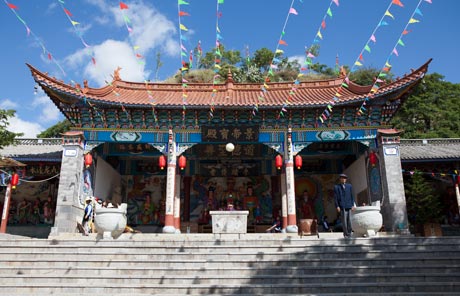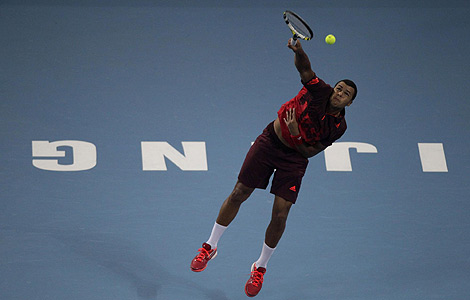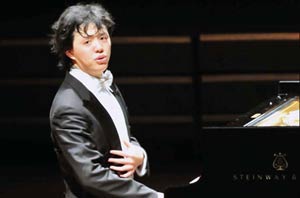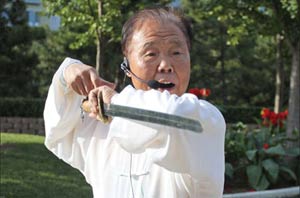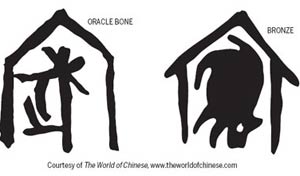Revolutionary images
Updated: 2011-10-11 08:45
(China Daily)
|
|||||||||
Eventually they took the call from photographer Liu Heung Shing's assistant, from China, who was tracking down some original photos taken by Father Leone Nani.
And Liu eventually got a rare photo for the cover of his latest book, a collection of photographs entitled China in Revolution: The Road to 1911, celebrating the 100th anniversary of the 1911 Revolution on Oct 10. Shot by Father Nani between 1904-1914 in Shaanxi province, the photo features an officer of the Northern Warlords (or New Army) looking forward.
It was the Qing Dynasty (1644-1911) New Army that turned on China's last feudal dynasty to usher in a new era.
A century later, Liu thought it was time to comb through the world's photographic history and present China's past sufferings to young people.
"How we see history shapes how we see the present, and also how others see us," says Liu at his home, a sunny courtyard house neighboring the Forbidden City, Beijing.
"The Chinese are not victims of history anymore. We should move on and we should face the past with sober minds and sensible views."
The 60-year-old Pulitzer-winning photographer took the picture of Mikhail Gorbachev resigning in 1991, signifying the end of the former Soviet Union. He has also published three collections of photographs, including China after Mao and China, Portrait of a Country, the latter selling over 250,000 copies in various languages.
His new book has more than 900 photos, neatly arranged according to date, with four articles.
"I was thinking of a direct exchange between the readers and the historical images that transcend time," he says, adding this was why the cover picture was chosen. "The officer in the photo looks straight into the eyes of the audience, as if they are having a dialogue with each other."
He set off on a year-long journey to search for original copies of photographs that suited the theme of his book, traveling to museums, libraries and private collections on many continents.
While his assistants did the research, Liu often flew to the destinations and stayed a week to get the photos and ferret out more information.
"In most cases, I had to visit the owners myself to get a look at the originals, which was exhausting," Liu says.
From Beth McKillop, of the United Kingdom's Victoria and Albert Museum, Liu got rare copies of photographs by Felice Beato (1832-1909), an Italian-British photographer who was one of the first to take photographs in East Asia.
"We were delighted to collaborate," McKillop says in an e-mail interview, "both because of Liu's important position as author of photographic works, and because the 1911 Revolution is of such huge importance for understanding the modern history of China."
"He's worked on this book in a way no other history book editor in the country has ever done before to collect these images of China from around the world," says Zhang Haipeng, a historian at the Chinese Academy of Social Sciences.
From the more than 10,000 old photos he examined, Liu selected those for the book according to their technical merit and the historical information they imparted.
The 900 plus photos that were chosen include 300 images that have not been published before, such as American Homer Lea training the New Army in 1904, in California.
Liu says it took him and his team about 1,000 hours using advanced technology to restore the photos to their best and to achieve a uniformity of coloration and style, "like typesetting the characters and letters".
There are a large number of photos showing ordinary people and their daily lives in scenes from 1850 to 1928, mostly taken by foreign priests, businessmen, diplomats and travelers.
Readers can see how people then dressed, got married, went to the market, and even met death on the execution grounds, together with images showing how revolutionary strength was accumulated and its effects.
"I want to convey that history is not only about the 1,000 famous people at that time but also about the 400 million population," Liu says.
Historian Zhang believes Liu's focus on ordinary people refreshes the history of the era for modern readers.
The book is available in two English versions, by both the Foreign Language Teaching and Research Press, and Hong Kong University Press in cooperation with Columbia University Press.
It's sure to appeal to international readers interested in China, Liu says. Meanwhile, an exhibition of 120 photos from the book will take place in 11 of the nation's cities.
"I keep on questing, learning and seeking enlightenment, as in The Road to 1911," Liu says, looking at the 100-year-old pomegranate trees in his courtyard, and adding he's currently working on portraits of popular contemporary Chinese artists.
![Company of Bengal Lancers escorts Count Waldersee on his arrival at Beijing before the Sacred Gate (Wumen), 1900. Alfred Graf von Waldersee (1832-1904) served as Chief of the Imperial German General Staff from 1888 to 1891 and as Allied Supreme Commander in China in 1900-1901. He arrived in Beijing on Oct 17, 1900. [Photos provided to China Daily] Revolutionary images](../../attachement/jpg/site1/20111011/0013729e48090ffdd30629.jpg)

